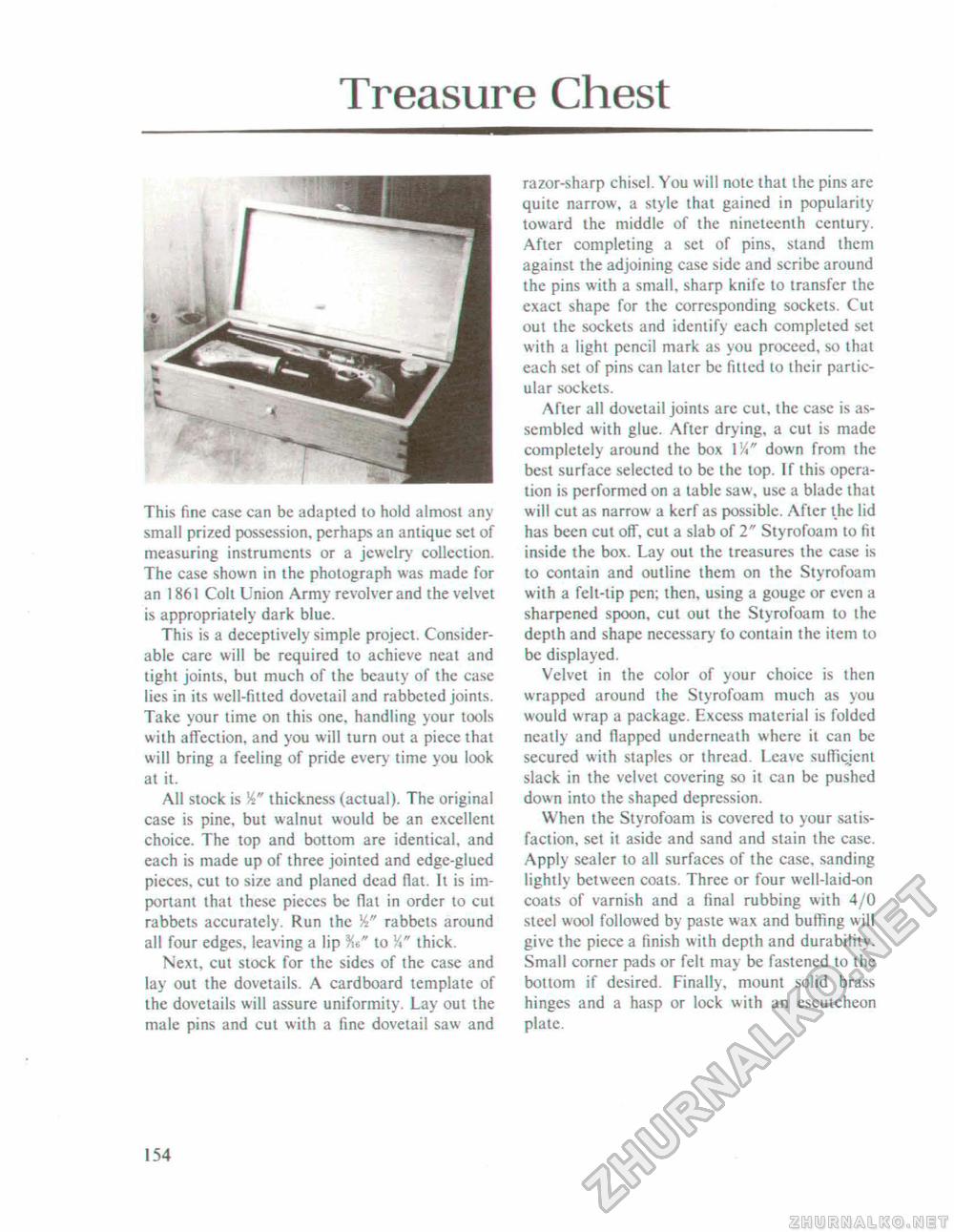Woodworker's Journal 101-Projects-for-Woodworkers, страница 161
Treasure Chestrazor-sharp chisel. You will note that the pins are quite narrow, a style that gained in popularity toward the middle of the nineteenth century. After completing a set of pins, stand them against the adjoining case side and scribe around the pins with a small, sharp knife to transfer the exact shape for the corresponding sockets. Cut out the sockets and identify each completed set with a light pencil mark as you proceed, so that each set of pins can later be fitted to their particular sockets. After all dovetail joints arc cut, the case is assembled with glue. After drying, a cut is made completely around the box V/t" down from the best surface selected to be the top. If this operation is performed on a table saw, use a blade that will cut as narrow a kerf as possible. After the lid has been cut off, cut a slab of 2" Styrofoam to fit inside the box. Lay out the treasures the case is to contain and outline them on the Styrofoam with a felt-tip pen; then, using a gouge or even a sharpened spoon, cut out the Styrofoam to the depth and shape necessary to contain the item to be displayed. Velvet in the color of your choice is then wrapped around the Styrofoam much as you would wrap a package. Excess material is folded neatly and flapped underneath where it can be secured with staples or thread. Leave sufficient slack in the velvet covering so it can be pushed down into the shaped depression. When the Styrofoam is covered to your satisfaction, set it aside and sand and stain the case. Apply sealer to all surfaces of the case, sanding lightly between coats. Three or four well-laid-on coats of varnish and a final rubbing with 4/0 steel wool followed by paste wax and buffing will give the piece a finish with depth and durability. Small corner pads or felt may be fastened to the bottom if desired. Finally, mount solid brass hinges and a hasp or lock with an escutcheon plate. This fine case can be adapted to hold almost any small prized possession, perhaps an antique set of measuring instruments or a jewelry collection. The case shown in the photograph was made for an 1861 Colt Union Army revolver and the velvet is appropriately dark blue. This is a deceptively simple project. Considerable care will be required to achieve neat and tight joints, but much of the beauty of the case lies in its well-fitted dovetail and rabbeted joints. Take your time on this one, handling your tools with affection, and you will turn out a piece that will bring a feeling of pride every time you look at it. All stock is %" thickness (actual). The original case is pine, but walnut would be an excellent choice. The top and bottom are identical, and each is made up of three jointed and edge-glued pieces, cut to size and planed dead flat. It is important that these pieces be fiat in order to cut rabbets accurately. Run the K" rabbets around all four edges, leaving a lip to Ya" thick. Next, cut stock for the sides of the case and lay out the dovetails. A cardboard template of the dovetails will assure uniformity. Lay out the male pins and cut with a fine dovetail saw and 154 |








